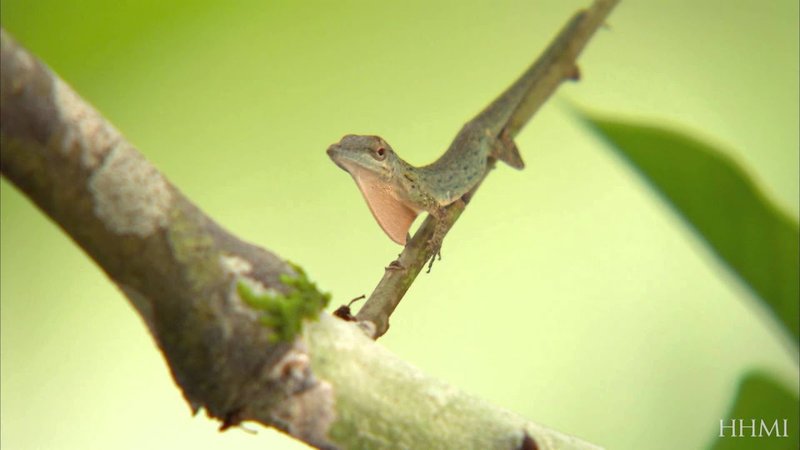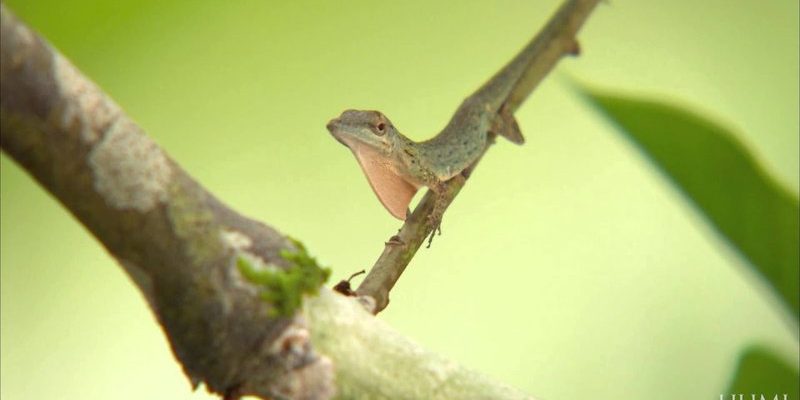
So, what exactly makes the anole lizard a survivor? Let’s dive deeper into their remarkable adaptations and understand how these little reptiles manage to outsmart predators, cope with changes, and thrive in different habitats. We’ll explore everything from their color-changing skills to their unique behaviors. Ready? Let’s hop into the world of the anole lizard!
Color Change: Camouflage and Communication
One of the most striking features of the anole lizard is its ability to change color. Think about how a chameleon does it, but with a twist. Anoles primarily use this color change for two main reasons: to hide from predators and to communicate with other lizards. When an anole feels threatened, it can shift to a shade that better matches its surroundings.
Imagine a green anole perched on a leaf. If a hawk swoops down, that lizard might turn brown, blending perfectly with its environment. This clever tactic keeps it safe from hungry eyes. Additionally, during mating seasons, males display vibrant colors to attract females. It’s like a flashy advertisement in the wild—”Look at me, I’m fit and ready to mate!”
Also, the changes aren’t just skin-deep. The lizards can shift hues in a matter of seconds, thanks to special pigment cells in their skin. How cool is that? This adaptability is crucial for their survival, allowing them to escape danger while still being able to socialize and find a mate.
Prehensile Tails: More Than Just a Balance Tool
Anoles also have prehensile tails that give them a leg up—literally! These tails are not just there for balance when they dart from branch to branch; they also serve as an extra limb, allowing them to grip and hold onto surfaces. In a way, it’s like having an additional hand to help navigate their environment.
Picture this: A green anole climbs high into a tree, navigating through branches to find a sunny spot. As it moves, it wraps its tail around a branch, stabilizing itself and making it easier to survey the area for food or potential threats. This adaptation not only helps with climbing but also allows the anole to use its limbs more efficiently.
Moreover, a prehensile tail can help an anole escape quickly. If it gets startled, it can use its tail to grasp a nearby branch and avoid falling. This agility makes it a tricky target for predators, enhancing its chance of survival.
Fast Reflexes: Escape Artists of the Animal Kingdom
You might have noticed how quickly anoles dart away when they sense danger. Their fast reflexes are a key adaptation that allows them to escape from predators with impressive speed. Anoles are equipped with a rapid nervous system that lets them respond almost instantly to threats, making them agile escape artists.
Imagine sitting quietly and suddenly seeing a shadow overhead. An anole would already be off and running before you could even process what’s happening! This ability is not just about speed; it’s also about smart decisions. When they sense danger, they often freeze for a split second, assessing their surroundings before making a move. That quick calculation can mean the difference between life and death.
Their speed and agility allow them to navigate their habitat swiftly, reducing the time they’re exposed to potential threats. Whether it’s a bird diving in for a meal or a curious human watching, anoles are always ready to make a quick getaway.
Unique Mating Displays: Finding a Partner
When it comes to reproduction, the anole lizard has some fascinating adaptations. Males perform elaborate mating displays to attract females, showcasing their vibrant colors and unique throat pouches. This is more than just show; it’s a demonstration of health and vitality.
During courtship, a male anole will puff out its throat pouch, often displaying bright colors to impress females. Think of it as a lively dance! This display is crucial, as females often choose mates based on these visual cues. The more vibrant and energetic the display, the more appealing the male is to potential partners.
These rituals not only help with mating but also serve to establish territory. A confident male will often display more aggressively against rivals, using his colors and throat pouch to communicate dominance. This way, he avoids unnecessary fights, which could lead to injury, and instead focuses on attracting a mate.
Dietary Flexibility: Omnivores in the Wild
Anole lizards are classified as omnivores, meaning they have a varied diet that includes both insects and plant matter. This flexibility is a major survival advantage. When insect populations are low, they can turn to fruit or leaves, making them less vulnerable to food shortages.
Picture an anole munching on a delicious beetle one moment and then nibbling on a flower petal the next. This adaptability to different food sources allows them to thrive in a variety of environments. Whether they’re in a backyard, a forest, or a tropical environment, anoles have the skills to find something to eat.
This varied diet not only helps them survive but also supports their reproductive health. A well-fed female is more likely to produce healthy eggs, ensuring that the next generation of anoles can carry on these remarkable adaptations.
Habitat Range: The Adaptability of Anoles
Anole lizards are found in a wide range of habitats, from forests to grasslands and even urban areas. This broad habitat range is a testament to their adaptability. Depending on the environment, anoles can change their behaviors and physical traits to fit in.
In urban settings, for example, anoles have learned to thrive alongside humans. They seek out landscaping, gardens, and even patios to find food and shelter. This ability to adjust to human environments showcases their resilience and flexibility.
In contrast, in their natural habitats, they might rely more on trees and shrubs for cover. Their ability to adapt to various climates—like tropical heat or dappled shade—allows them to spread out and establish populations in diverse areas. It’s like they have a survival guide that tells them how to fit in no matter where they are.
The anole lizard is a small but mighty survivor in the wild. From their impressive color-changing abilities to unique mating displays and dietary flexibility, these reptiles exemplify how adaptations can enhance survival. Each feature helps them navigate their environments, evade predators, and thrive in fluctuating conditions.
By understanding these adaptations, we gain insight into the resilience of life on Earth. Anoles remind us that survival isn’t just about strength—it’s about cleverness, adaptability, and the small but crucial changes that can make all the difference. So, the next time you spot one of these lively little lizards, take a moment to appreciate the incredible journey they’ve taken to be here today.

